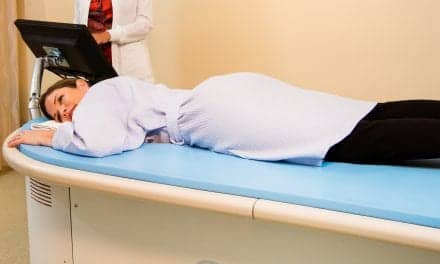
The Ingenuity CT from Philips Healthcare includes features like iDose4, SyncRight, and the Intellispace Portal.
West Calcasieu Cameron Hospital (WCCH), a 109-bed facility in Sulphur, La, was the first community hospital in the United States to install the Ingenuity CT, Philips’ latest in low dose imaging technology. Many of the features of this new system are well suited to the needs of smaller community hospitals, as well as larger academic settings.
Before the installation of the Ingenuity CT at WCCH, all the previous scanners were based in university settings, including Indiana University, Oregon Health Sciences in Portland, and the University of Rochester. Now there are probably easily about a dozen out there globally, stated Bill Radaj, vice president and business manager for Computed Tomography for Philips Healthcare. “It [the Ingenuity CT] is a nice fit for the community-based hospitals that may have older technologies. Once they upgrade to this type of technology, lots of things open up. Not only the cardiology opportunities but angiographic procedures can open up, multiphase abdomen studies can open up, so the referral patterns can change as well. We are keenly aware of that as a vendor, so what we do also is help them market their product in the community .? It’s a really nice program for community hospitals.”
In a recent press release, Michael Turner, MD, FACC, cardiologist on staff with West Calcasieu Cameron Hospital, said, “The Ingenuity 128-slice scanner is placed near our emergency department, on the ready for chest pain workups for patients in need of urgent care.” Radaj pointed out that the key in this situation was the synchronization between administration and the clinical groups that would all be impacted by this product. “I was down there personally and it’s a great story,” said Radaj. “A little community hospital bringing the latest and best technology. This is also a story of cardiology and radiology working together. This is community health care at its finest.”
In addition to the increased clinical opportunities, there are cost benefits that come from a system where lower dosing, more carefully monitored contrast administration, and faster throughput are possible. According to Radaj, the key features of the Ingenuity CT platform that deliver in these areas are iDose4, SyncRight, the user interface, and the Intellispace Portal.
The iDose4 is a fourth generation iterative reconstruction technique. “Philips is very cognizant in our engineering design and our delivery of the product in keeping doses as low as possible,” said Radaj. “Medical radiation is on the increase because it’s such a great tool. So then it’s very important that vendors and customers alike ? acquire that exam at the least possible dose. That’s the ALARA (As Low As Reasonably Achievable) principle. And iDose4 fits very well into that scenario.”
SyncRight is the collaboration between Philips Healthcare and MEDRAD, developer of an automated infusion system. “It takes all the protocols that MEDRAD has developed for their injector. What we have done is take that screen right off the screen of the injector and put it right on the screen of the system. So all the interface is off of one screen. All very streamlined and straightforward, making it easier for the technologist to plan the protocol off of one screen on the scanner and not having to go back and forth between the scanner and injector interface,” said Radaj.
When asked to describe the improvements to the scanner user interface, Radaj noted that it is just much more intuitive now, and he estimates anywhere from 5 to 15 minutes time is saved per procedure. Although it is dependent on the operator, “we know as a fact that by just changing the graphic user interface, we have gone from 30 mouse clicks to five,” he added.
In addition to these standard features on the Ingenuity platform, there is the option to add the Intellispace Portal, an adjunct server that is the platform for advanced analyses and communications within the entire enterprise.
“It all comes back to what providers are all being measured on in the new health care paradigm of quality of care to their patients,” Radaj concluded. “Ingenuity fits very well into that paradigm. The reduction in the dose and the reduction in the contrast material and then the [increased] throughput and not compromising on the quality of the whole exam.”





